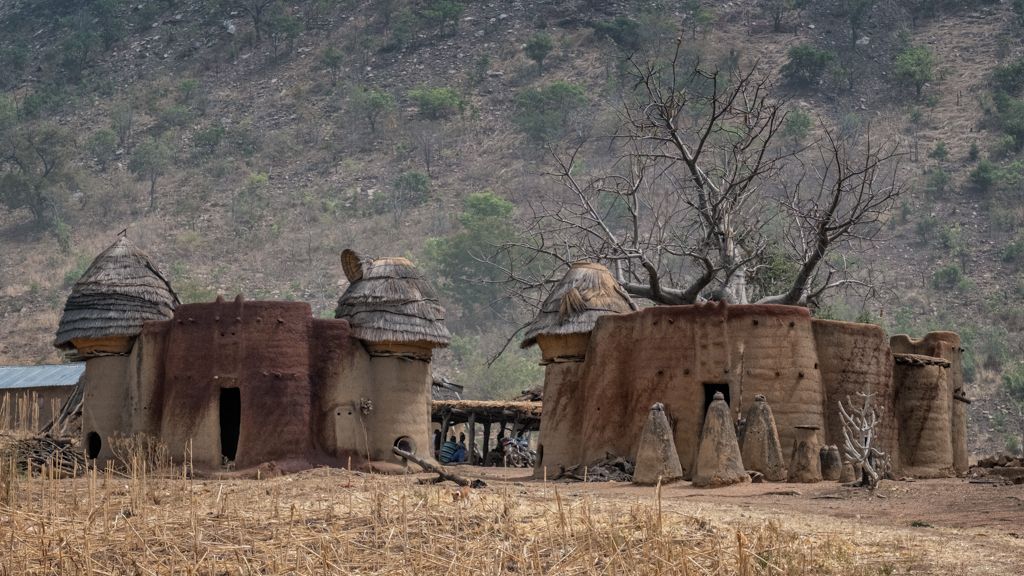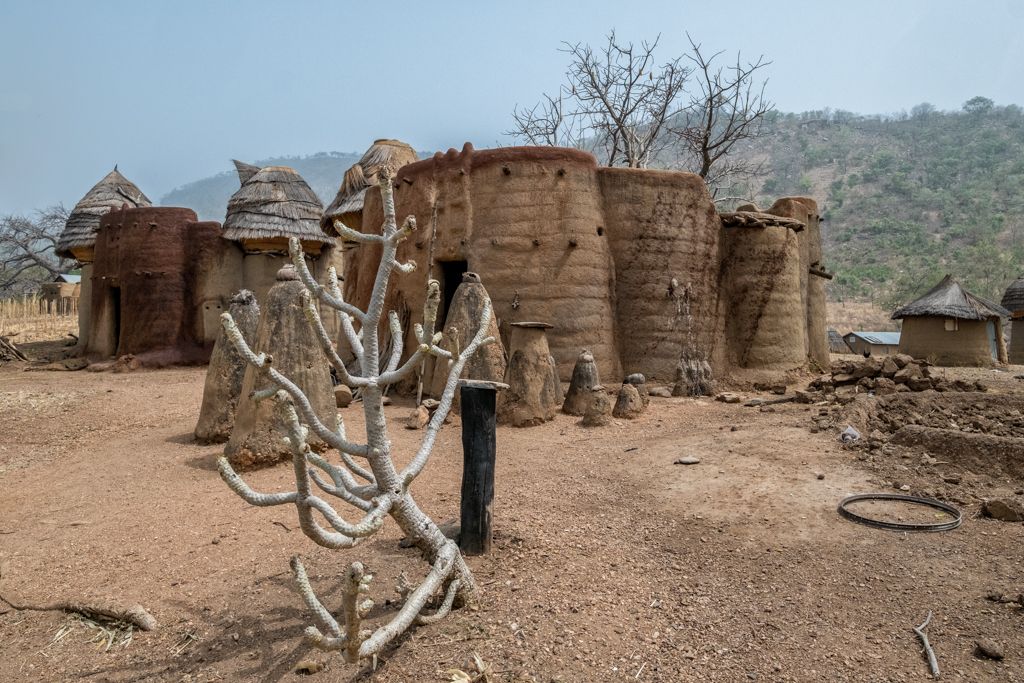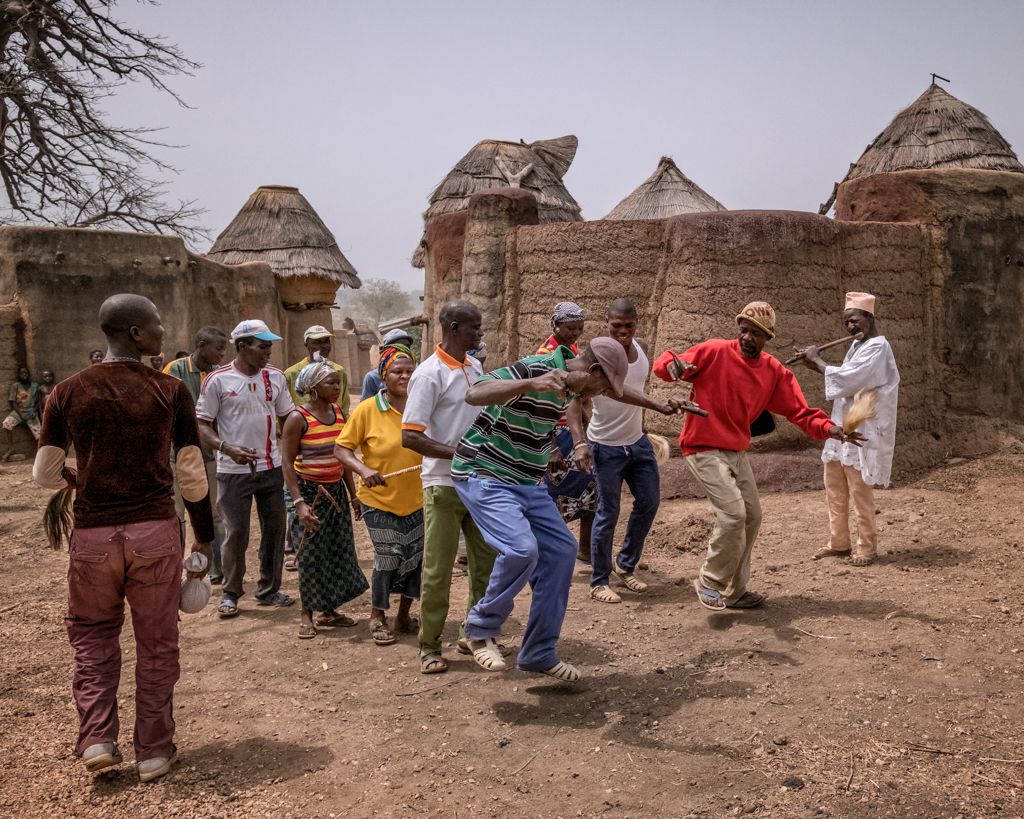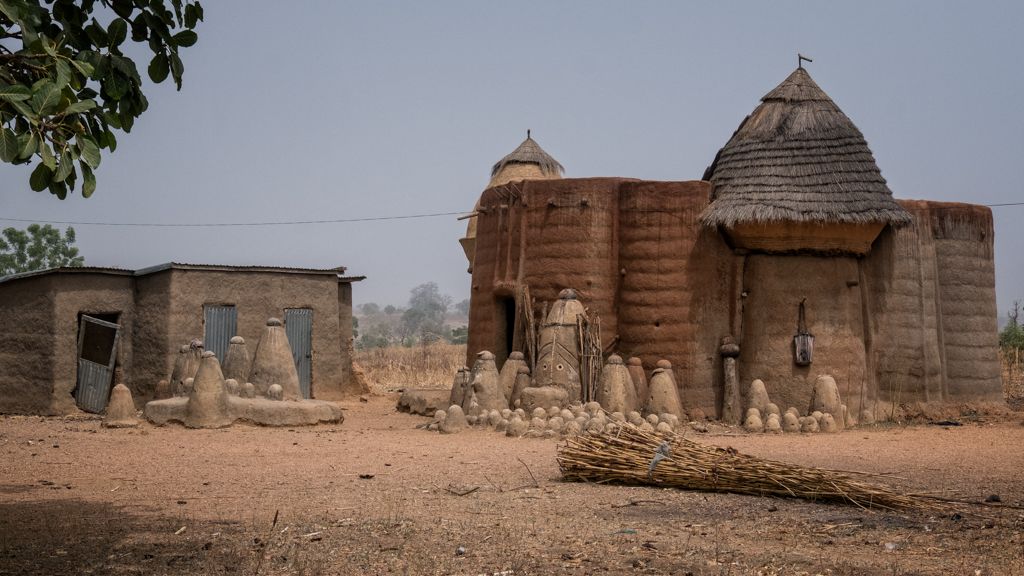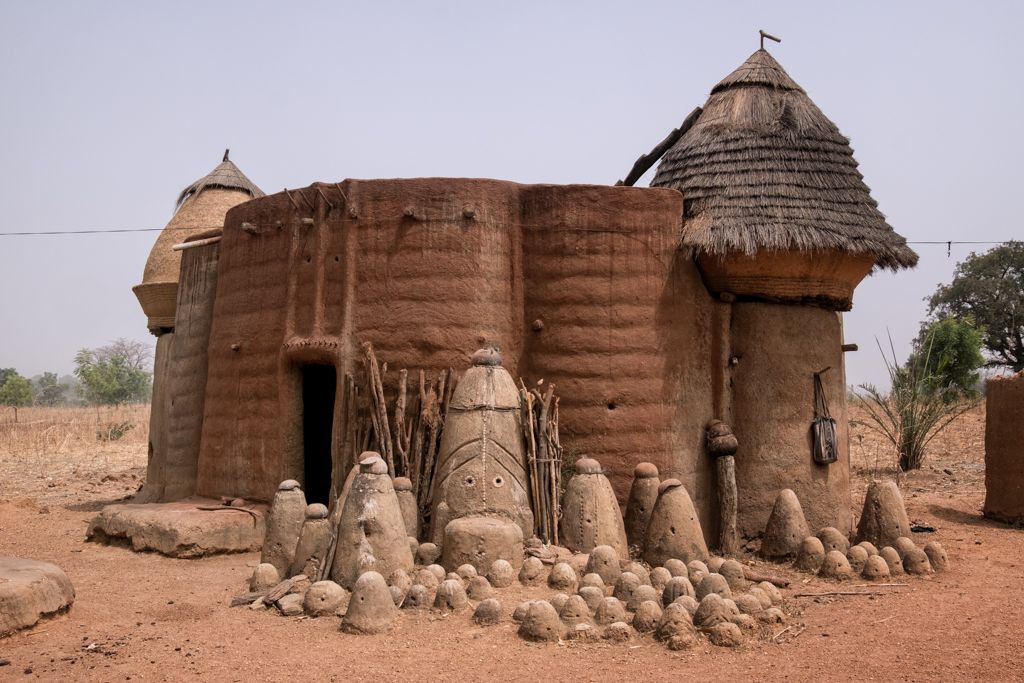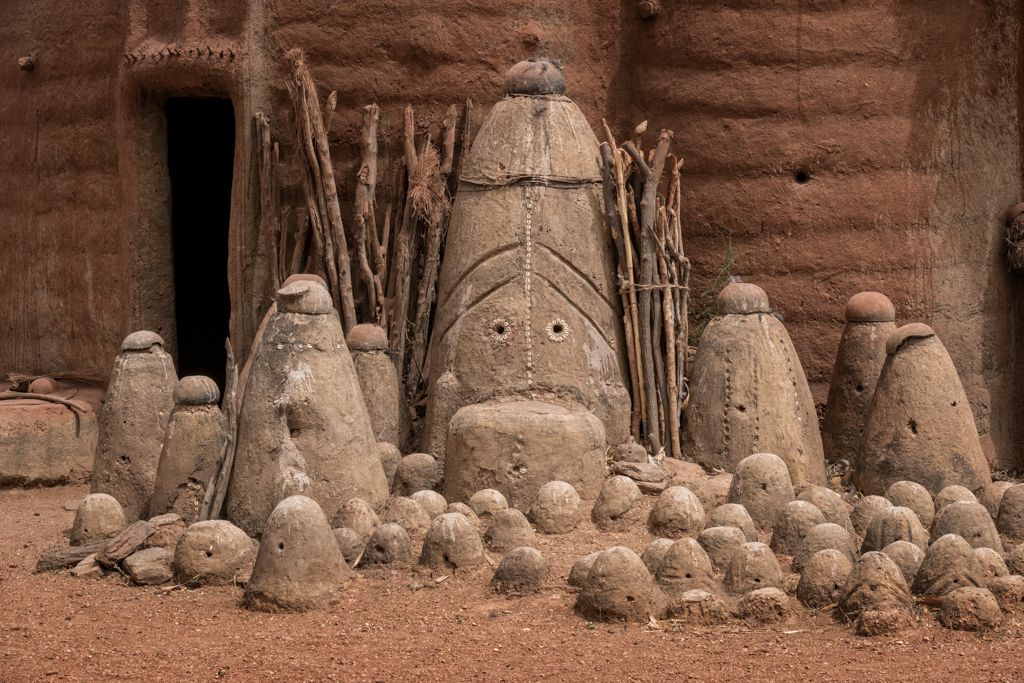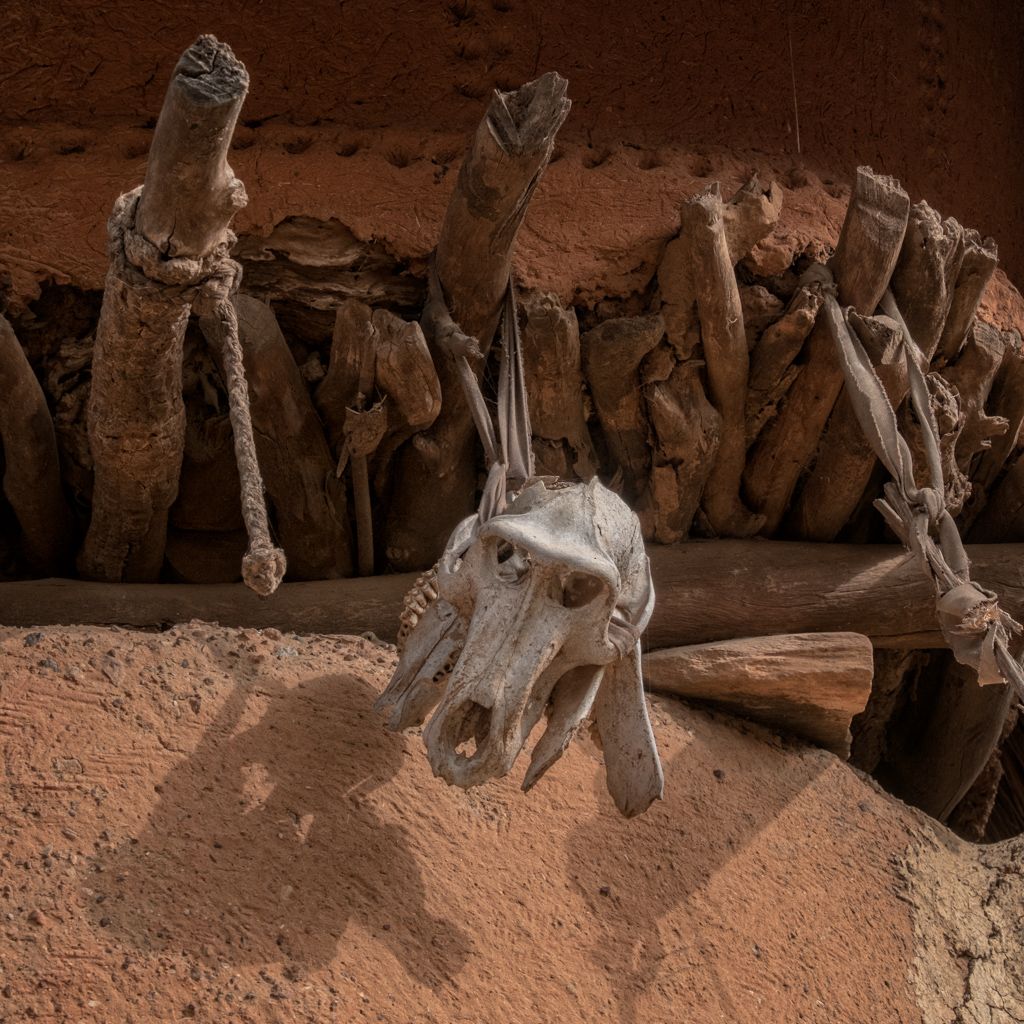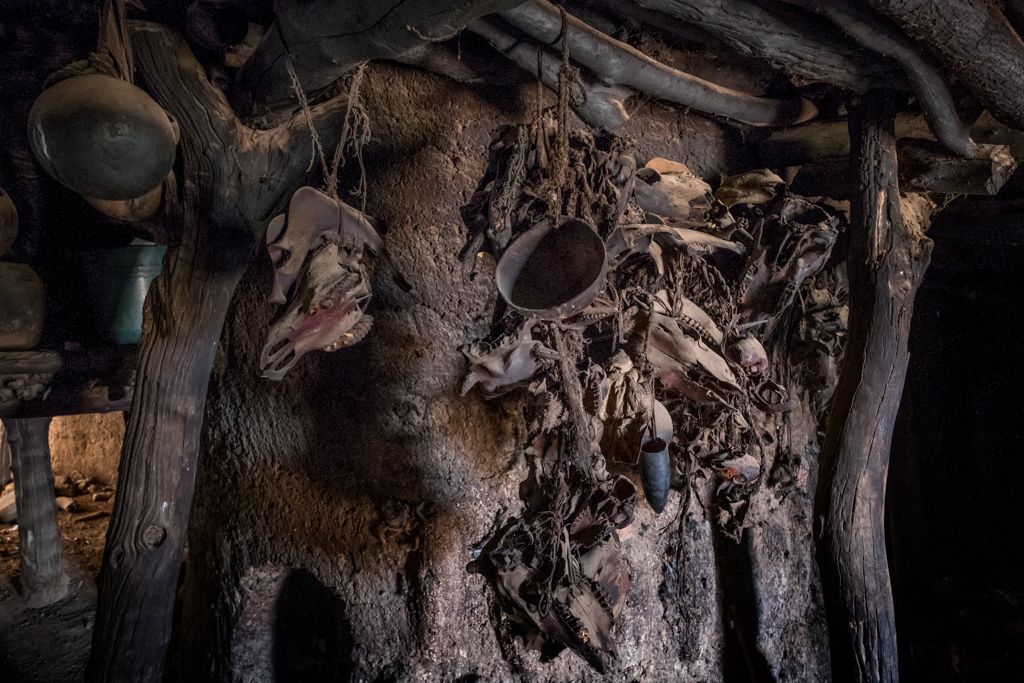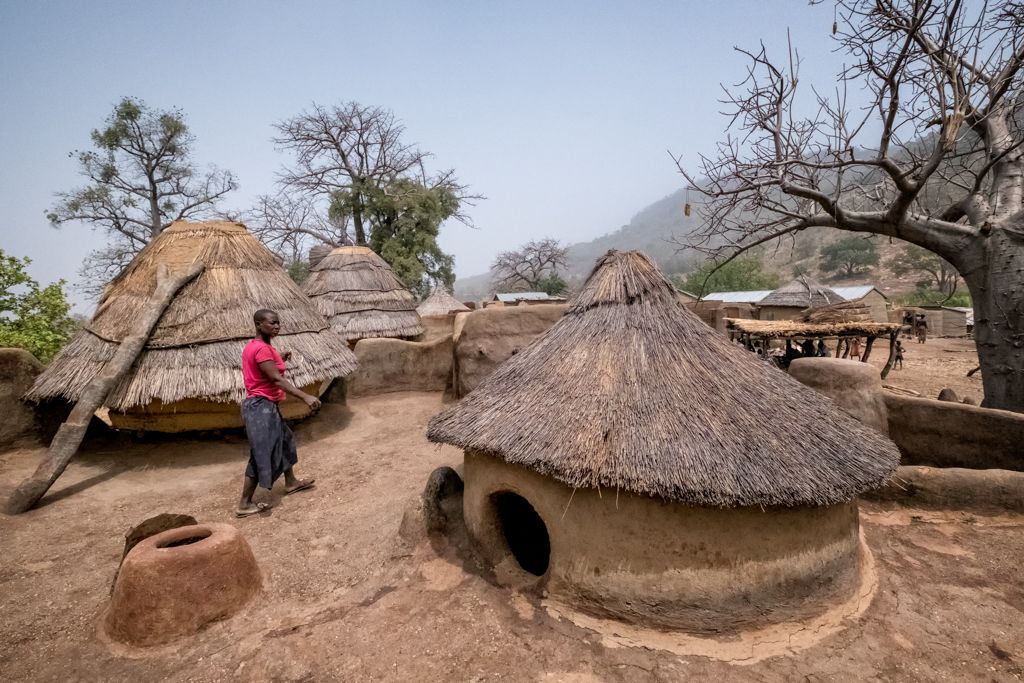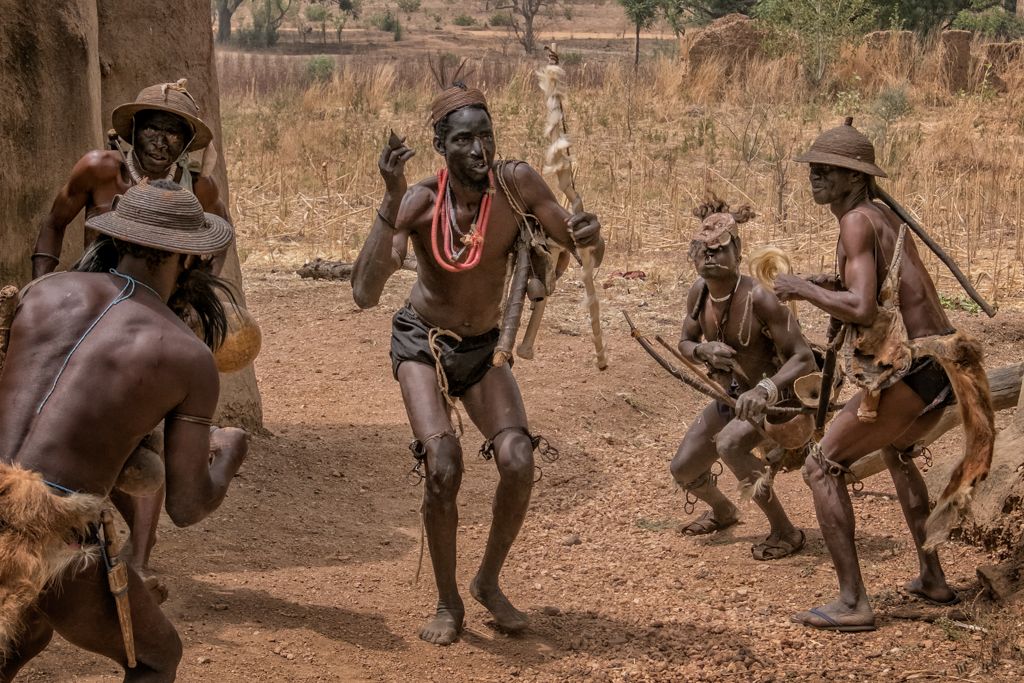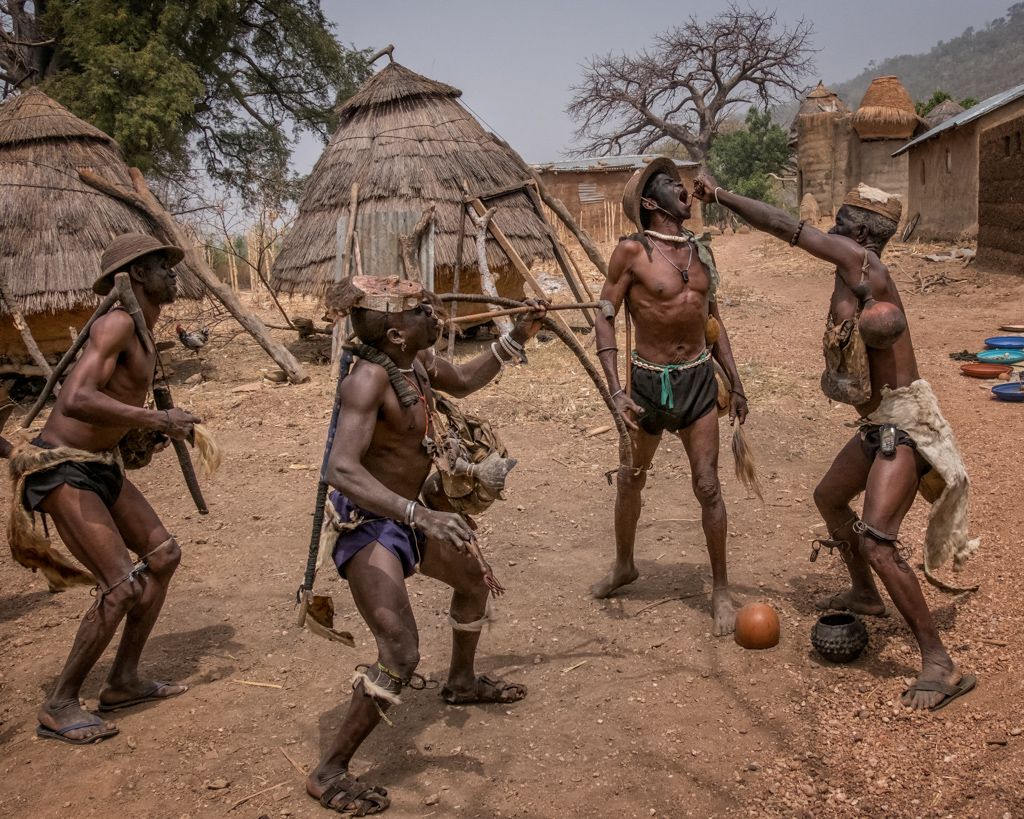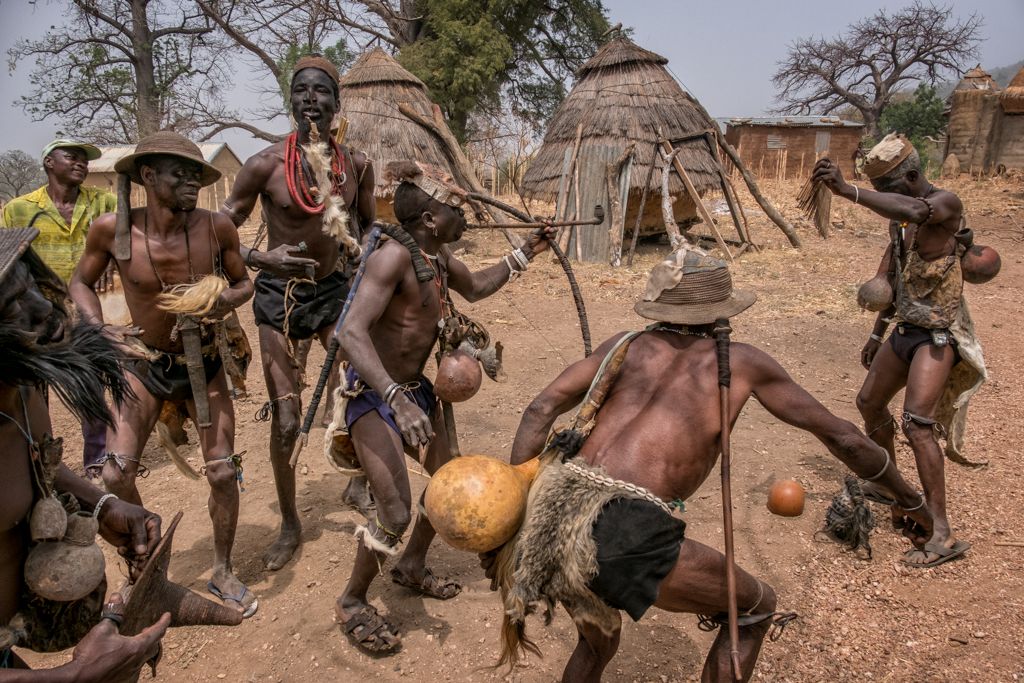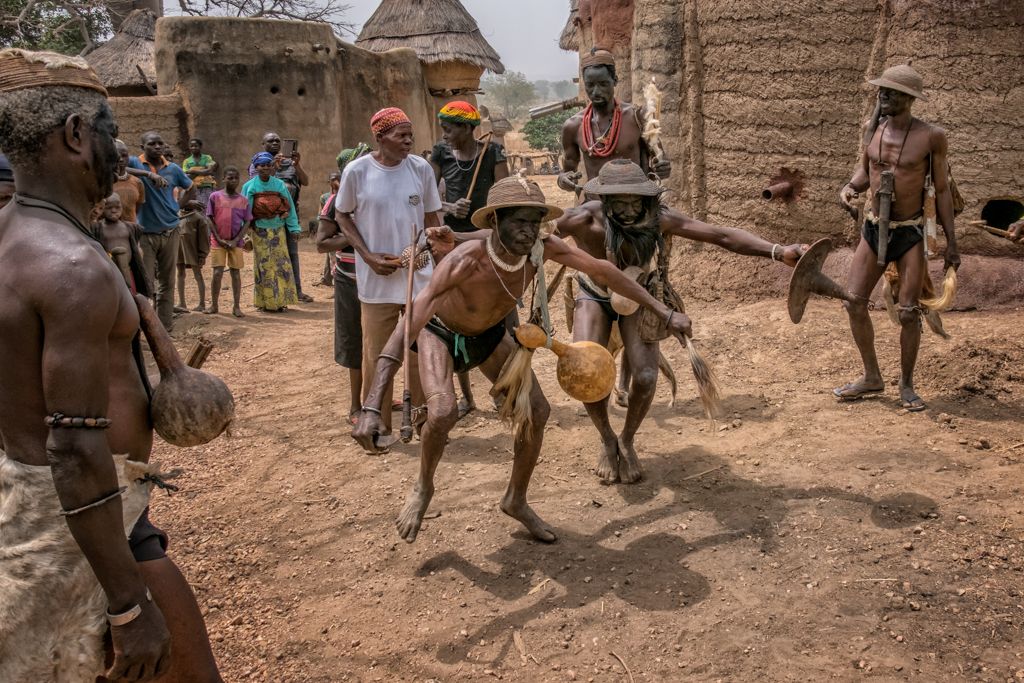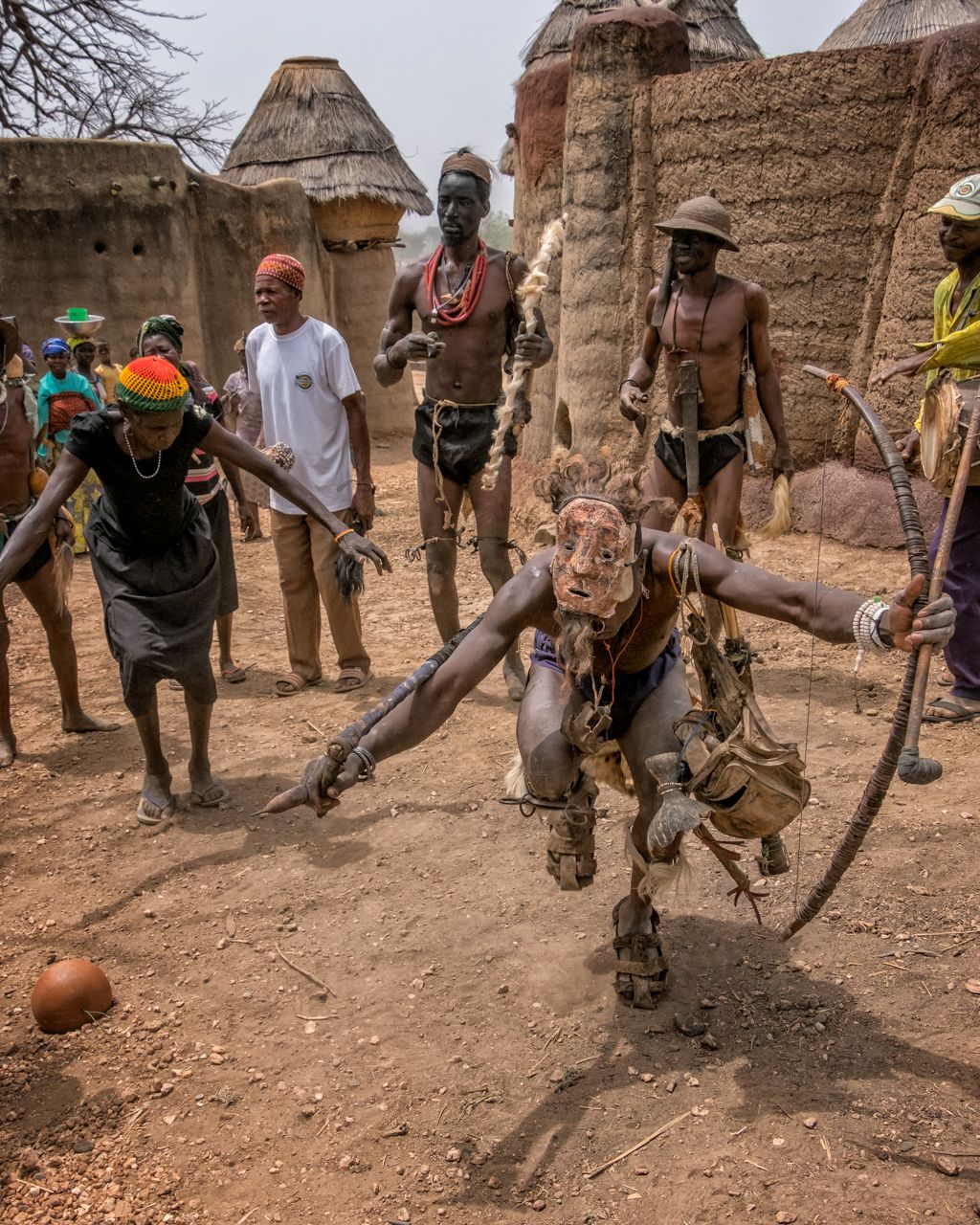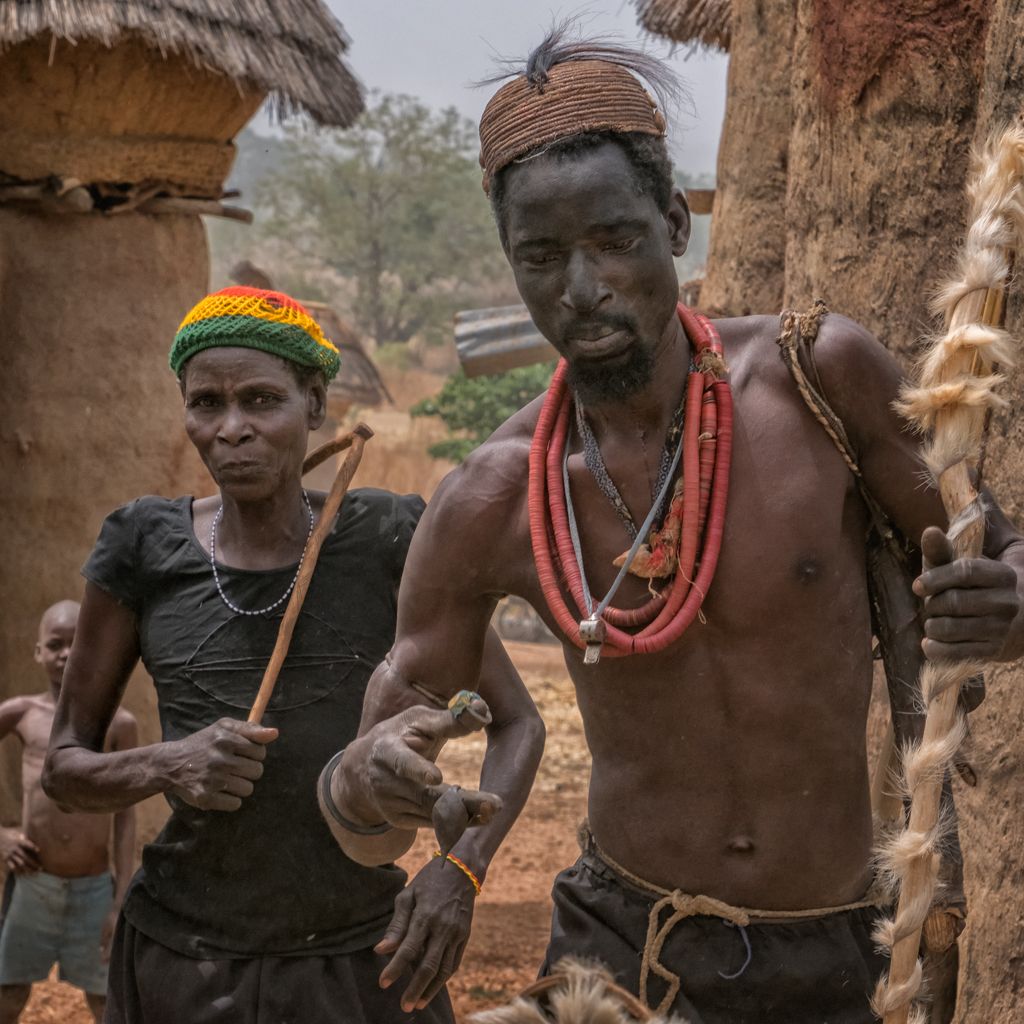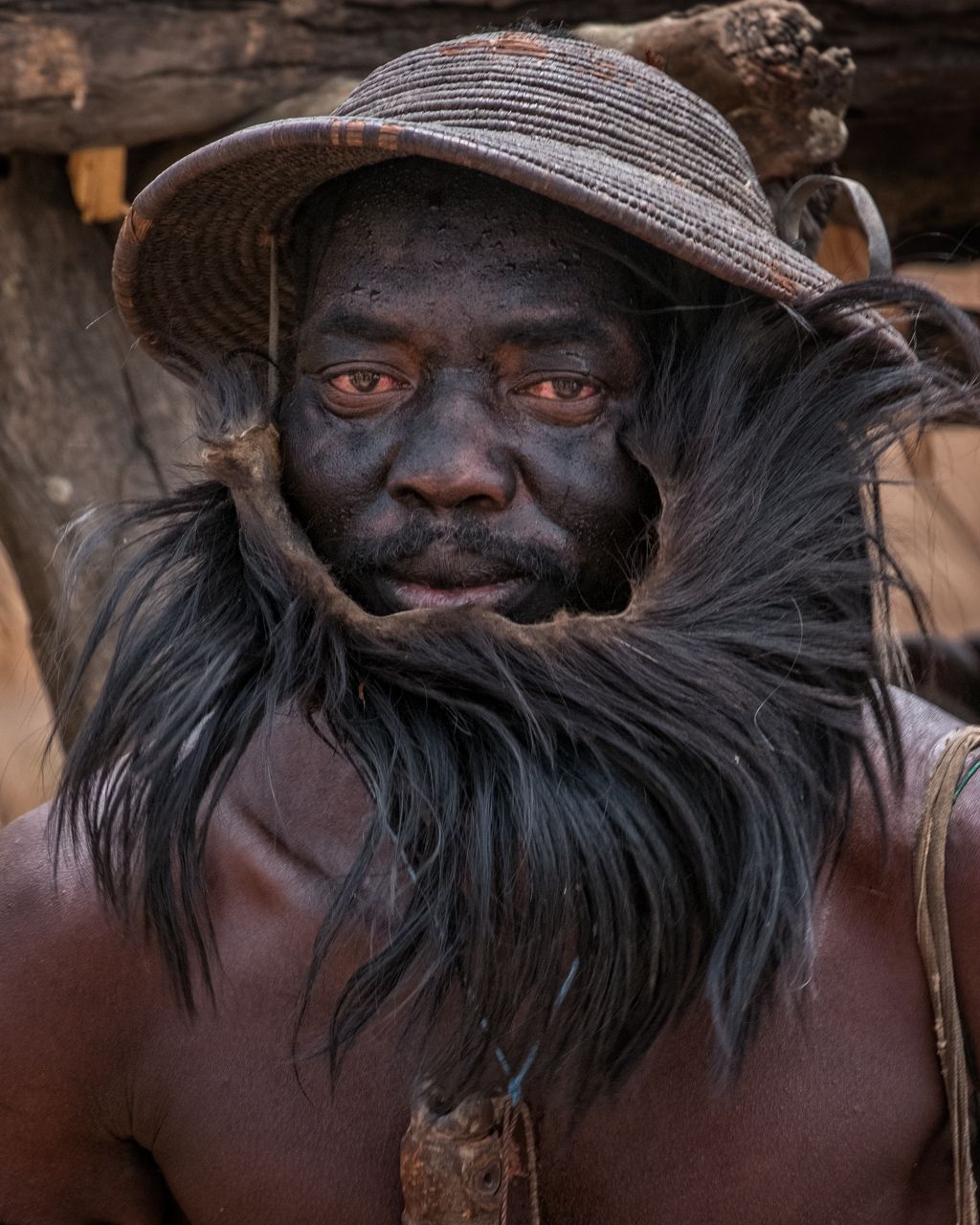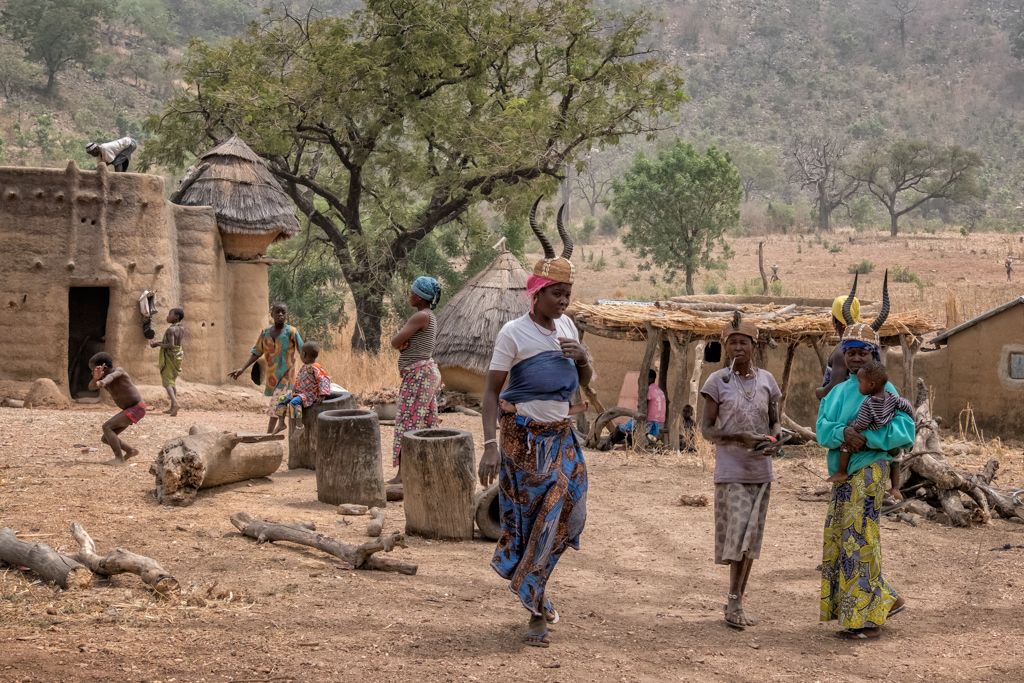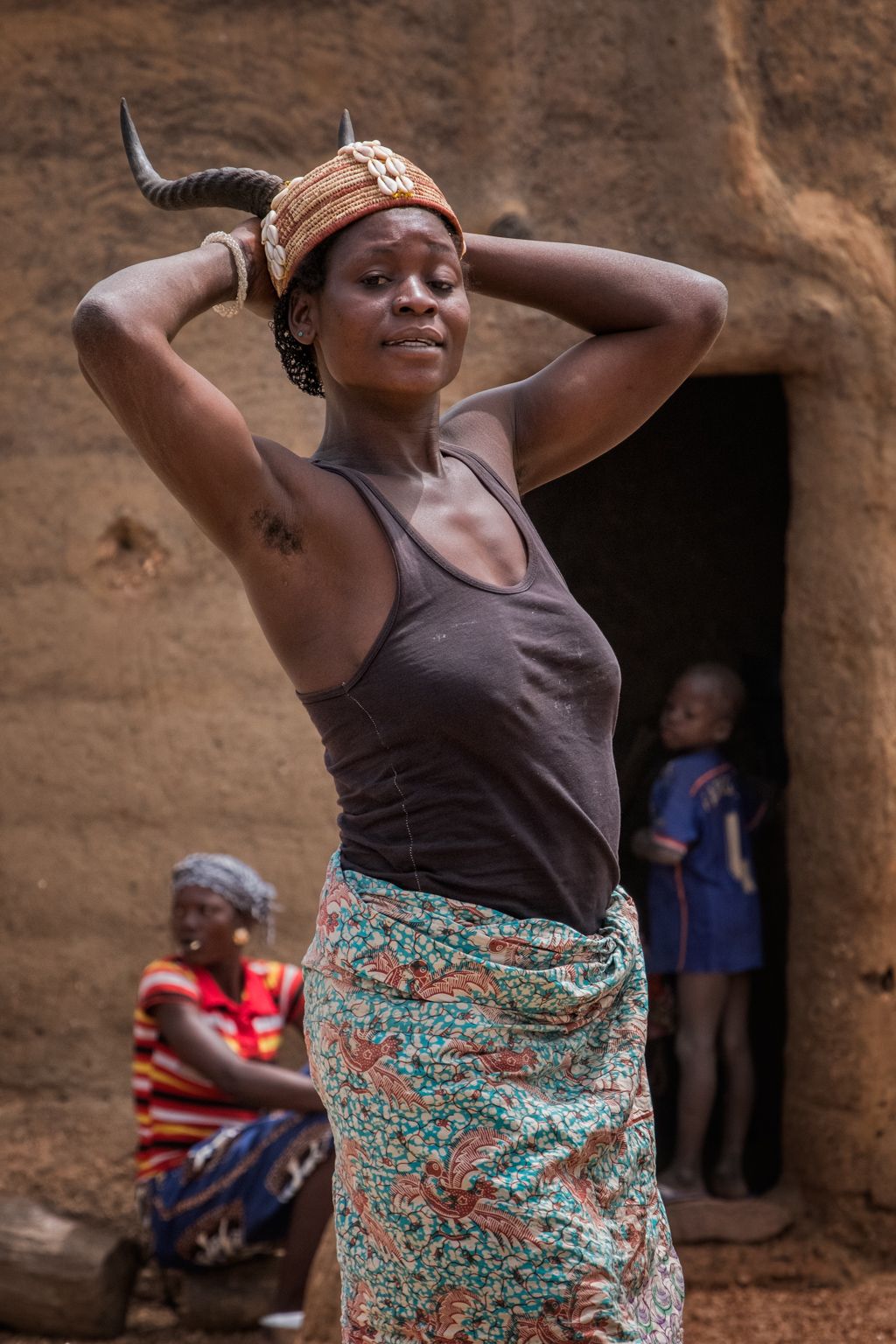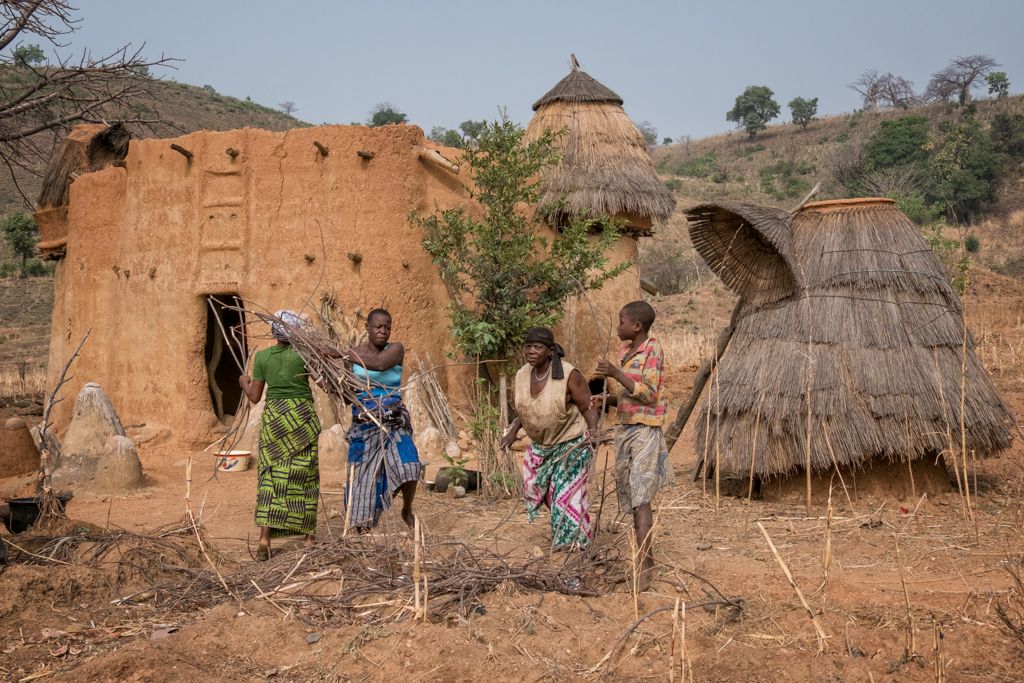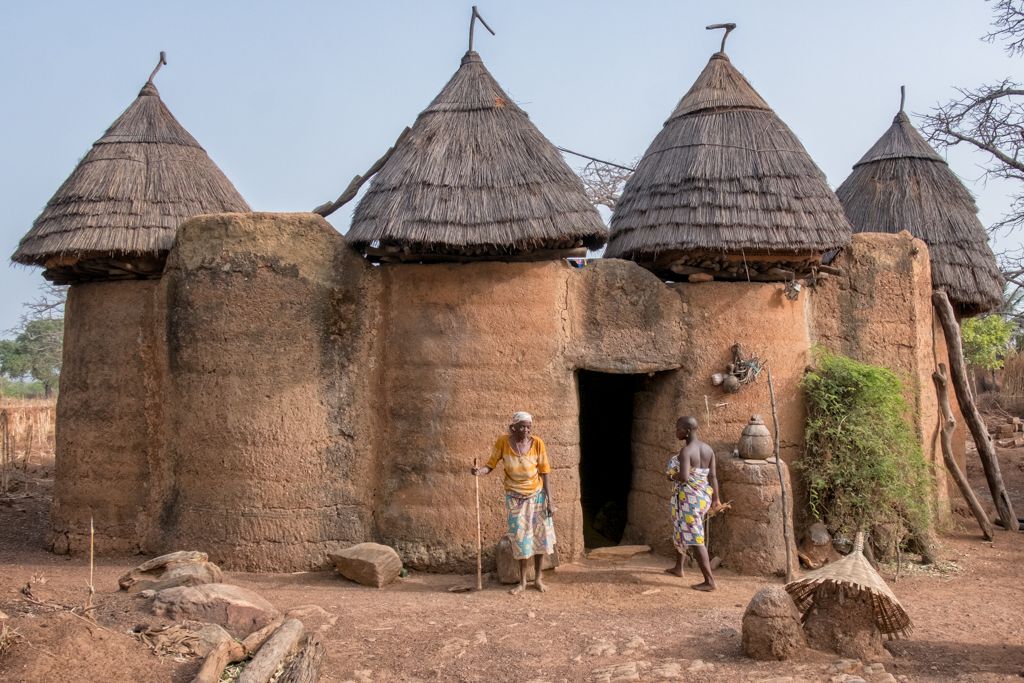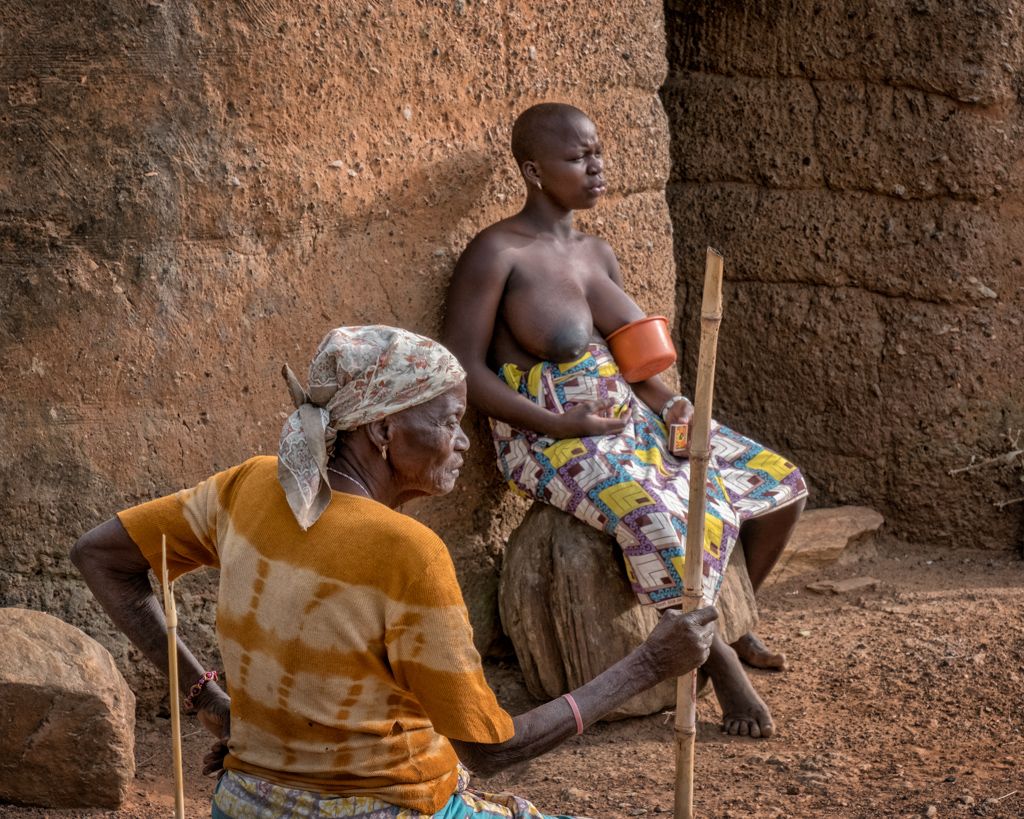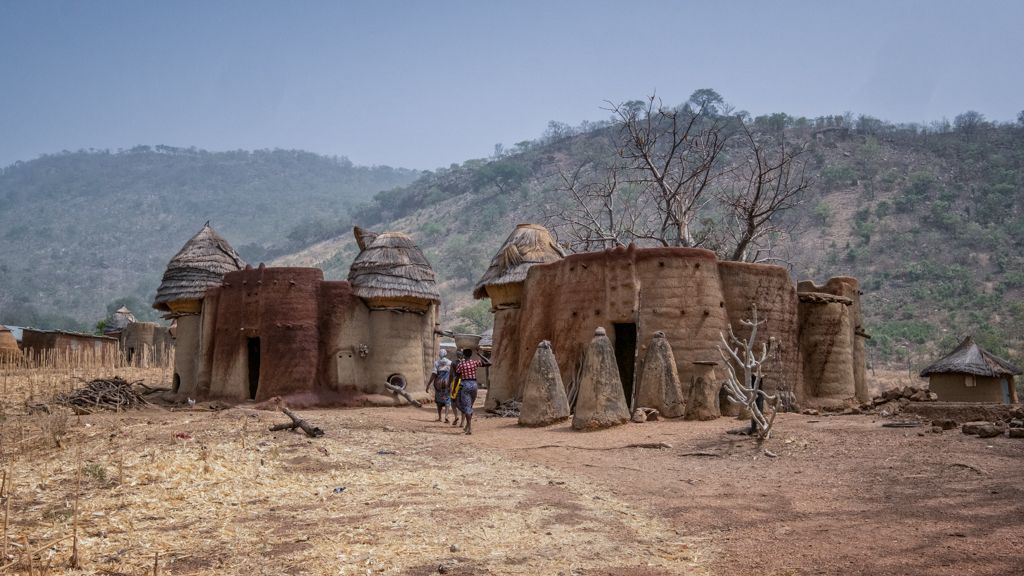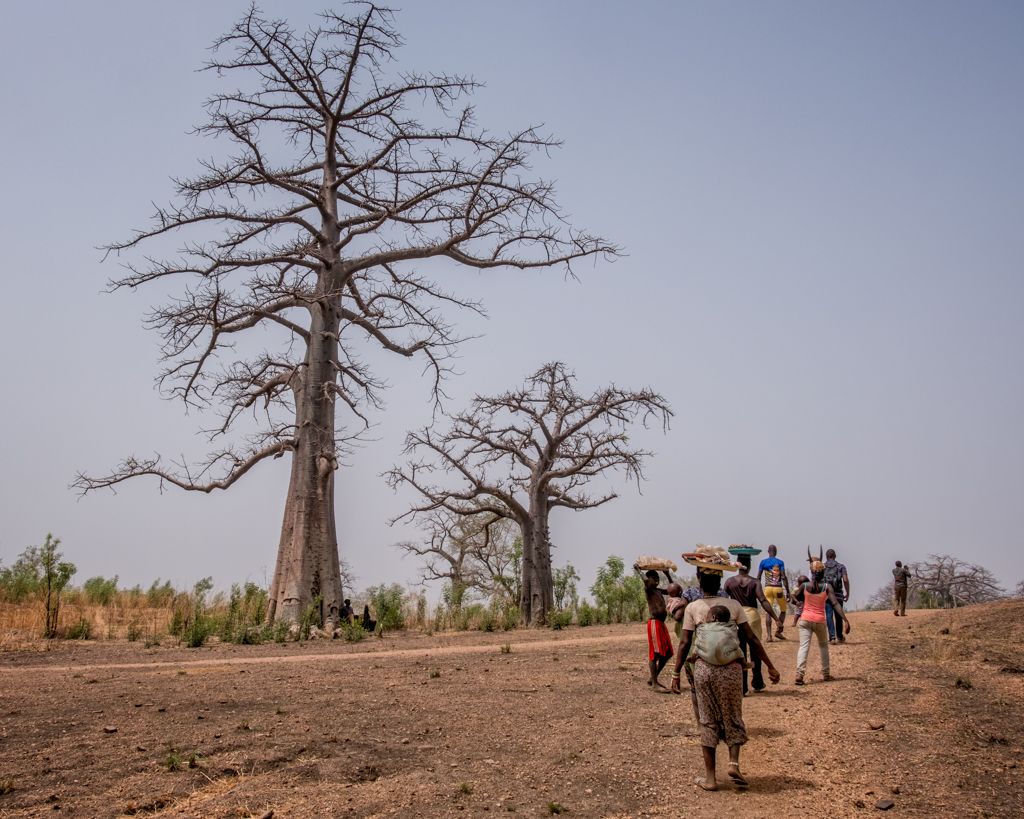TOGO & BENIN: Koutammakou—A Cultural Landscape & Its People
Koutammakou is a hilly region of northeastern Togo, extending across the border into northwestern Benin. The region has long been inhabited by closely related groups of the Batammariba (or Tammari) people, also called Taberma in Togo and Somba in Benin. The Batammariba are noted for their domestic architecture—castle-like mud tower-houses, many two stories high, with multiple rooms and space for domestic animals and grain storage as well a kitchen and living quarters. In Togo, these houses are called Takyenta; and in Benin, Tata Somba. Many have flat roofs for drying grain, while some have conical thatched roofs. They are grouped in villages with ceremonial spaces, initiation sites, and numerous animist shrines for ritual animal sacrifice. This unique, mini-fortress-like architectural style is thought to have developed as a protective response to night raids during the time when the ancestors of these people were the target of raids to supply the slave trade. On the day of my visit to the Taberma village of Basamba, a group of locals were practicing their dancing for an upcoming spring festival; and shortly after, a group of performers from another village danced into Basamba to put on a performance for the local chief and the assembled villagers. I include images of these impromptu events, along with those of the exteriors and interiors of the houses, and of shrines and inhabitants of several villages on both sides of the border. In 2004, “Koutammakou, the Land of the Batammariba” in the Kara region of Togo was designated a UNESCO World Heritage Site.

